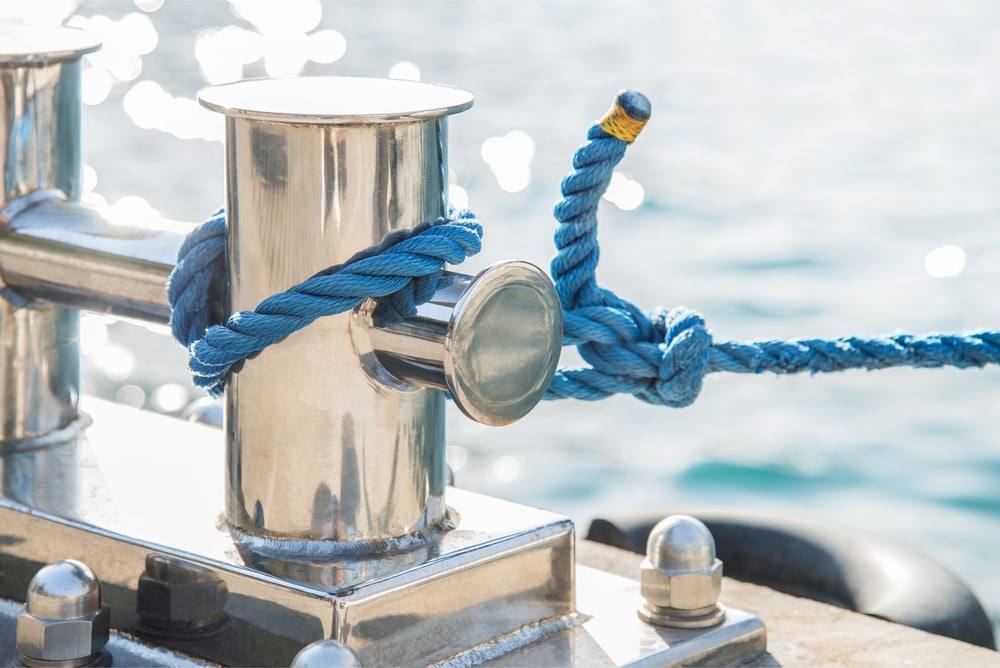AISI 316 Stainless Steel: Specification and Datasheet
SAE / ANSI / AISI 316 is the second most commonly available/widely used type of stainless steel after the SAE/ANSI/AISI 304. Considered the generic workhorse, SS 304 can serve in most situations with great success. However, while both are typically used in industry, SS AISI 316 is used in even harsher environments where there is a need for:
- Greater corrosion resistance
- Greater tensile strength at higher operating temperatures
- Acidic resistance of solutions of nitric acid of concentration as high as 5% at 50 °C
- Phosphoric acid of concentration of up to 20% at 100 °C

AISI 316 stainless steel is commonly used for equipment in the pharmaceutical industry
In comparison, SS AISI 316 boasts better resistance to chloride-rich conditions than the typical SS 304 thanks to the molybdenum addition.
Uses for SS AISI 316
Also known as surgical stainless steel, marine steel, 316S16 (as per the British Standard), SS 316 is an austenitic chromium-nickel alloy. As a consequence it:
- Has a very high corrosion resistance
- Is generally nonmagnetic
- Can perform well at a very wide temperature range (-150 to 950 °C).
It is also worth noting that SS AISI 316 can withstand extremely corrosive environments and is easily shaped, welded and machined. Using standard fusion methods, it is very popular in a wide range of applications including the following sectors:
- Medical equipment
- Aerospace engineering
- Food processing equipment
- Storage tanks and transport tanks for chemicals
- Nuclear plants (cladding of fuel rods)
- Textile dyeing and/or bleaching machines
- Rubber and paper pulp production plants
- Screens for mining plants
- Quarrying and water filtration systems
- Springs, bolts, screws and nuts
- Marine engineering and boat fittings
- Cryogenics
Additional reasons why AISI 316 is used in the aforementioned sectors include:
- An aesthetically pleasing appearance
- Easiness in cleaning
- Relatively high-strength to weight ratio
- Relatively high availability in many different forms

A marina bollard manufactured from Stainless Steel AISI 316
Heat treatment is achieved via an annealing procedure where the product is heated up to 1900 °C, followed by adequately quick (three minutes) air cooling down to 400-800 °C. This must be done with great care to avoid a reprecipitation of chromium carbides that adversely affect the corrosion resistance properties of SS AISI 316. As is the case with all austenitic stainless steels, SS AISI 316 cannot be hardened through heat treatment procedures.
Physical Properties and Datasheet
AISI 316 Approximate Average Composition Range
| Iron (Fe) | 68.5% |
| Chromium (Cr) | 16.25% |
| Nickel (Ni) | 11.5% |
| Molybdenum (Mo) | 2.5% |
| Manganese (Mn) | 1% |
| Silicon (Si) | 0.5% |
| Nitrogen (N) | 0.05% |
| Carbon (C) | 0.04% |
| Phosphorus (P) | 0.023% |
| Sulfur (S) | 0.015% |
Physical Properties of AISI 316
| Material Density | 8000 kg/m3 |
| Elastic Modulus | 193 GPascal |
| Mean Thermal Expansion Coefficient | 16.5 μm/m/oC |
| Mean Thermal Conductivity | 18.9 W/m*K |
| Specific Heat Capacity | 500 J/kg*K |
| Electrical Resistivity | 740 (nΩ*m) |
| Melting Onset | 1380 oC / 2510 oF |
| Melting Completion | 1400 oC / 2550 oF |
| Embodied Energy | 53 MJ/kg |
| Calomel Potential | -50 mV |
Mechanical Properties of AISI 316
| Max Tensile Strength | 580 MPascal |
| Yield Tensile Strength | 290 MPascal |
| Elongation | 40% (50 mm) |
| Elongation at break | 50% (50 mm) |
| Rockwell Hardness | 95 |
| Brinell Hardness | 219 |